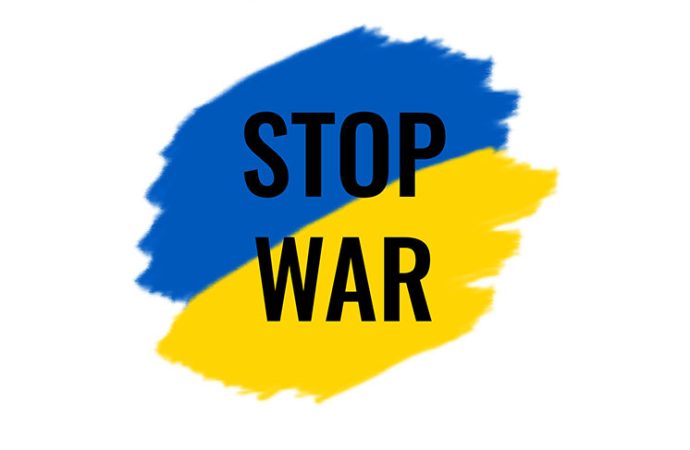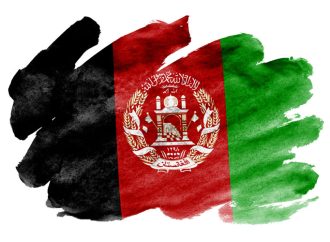Author Recent Posts Haffiza Syeda Azkia Batool Latest posts by Haffiza Syeda Azkia Batool (see all) Russia-Ukraine Conflict – February 24, 2023
On February 24, 2022, Russia began a military invasion of Ukraine. Russian President Vladimir Putin referred to it as a “special military operation,” but the size of the assault indicated an all-out war. More than 100,000 deaths have been reported and the war has uprooted nearly two million Ukrainians. This is a complex crisis, and all the reasons are hidden in history. The involvement of the US and its European allies has further aggravated the Russia Ukraine crisis. Before invading Ukraine, Putin justified his armed campaign as a response to NATO’s eastward expansion after the Cold War.
During the ninth century, Slavic people lived in a state called Kievan Rus, with Kyiv as its capital. Grand Prince Volodymyr ruled Kievan Rus from 980 to 1015, which included parts of Russia, modern-day Belarus, and Ukraine all the way to the Baltic Sea. Today, Russia and Ukraine draw their lineage from this Slavic state. Putin is right about the fact that historically, the Russians and the Ukrainians were recognised as one nation, but claiming a territory based on colonial history seems wrong; doing so would be equivalent to Britain declaring India as its own country. Hence, post-imperialism can’t be a justification for modern-day expansionism.
Currently, Ukraine is divided between the east and the west, where the west considers it to be more European, while the east considers it to be more Russian, be it in terms of geography or sentiments. Ukrainian is the primary language spoken in the western Ukraine, while native Russian speakers make up one-third of the population in the eastern part of the country. While Russia is seen with distrust in the west, it is viewed through the prism of shared history and tradition in the east. However, this connection between Eastern Ukraine and Russia had been forced.
Historically, Ukraine was forcefully Russified. It came under increasing Russian influence after the Treaty of Pereiaslav (1654), a “military alliance against Poland that concluded Moscow as a protectorate of the Ukrainian Cossack state.” Through the importation of Russians, Catherine the Great began the russification of Ukraine. The Ukrainian language was outlawed, and by 1800, schools were instructed to teach the Russian language instead. In the 1930s, millions of Ukrainians were killed by a man-made famine, “Holodomor,” engineered by the Stalin government. In the 1940s, the deportation of the entire Crimean Tarter Community was carried out by Joseph Stalin and russified the peninsula: “Tatar books were banned, their mosques were destroyed, ancient Tatar names were erased, and hence any study of the Tatar’s native language was banned.”
Much changed in the decades that followed. As part of the Soviet Union, Ukraine was governed by Moscow. During the Cold War, Ukraine was USSR’s second-most powerful republic, possessing defence industries, vast agricultural lands, and a large portion of the Soviet nuclear arsenal. In 1994, the Budapest Memorandum was signed, under which Ukraine consented to hand over all nuclear warheads that it inherited from the erstwhile Soviet Union and signed the Nuclear Non-Proliferation Treaty. Hence, Putin’s current Ukrainian invasion violates the Budapest Memorandum, as signatories agreed to “respect their independence, sovereignty, and the existing borders of Ukraine.”
Since the independence of Ukraine, the early years didn’t seem troublesome as Ukraine was mainly led by pro-Moscow leaders. However, the 2004 presidential elections signalled Ukraine’s tilt towards the west, limiting Russian influence. Hence, the Kremlin-backed candidate Viktor Yanukovych was effectively stopped from stealing the Ukrainian presidential election by the Orange Revolution of 2004, allowing his reformist competitor, Viktor Yushchenko, to be re-elected.
Ukraine faced the biggest security threat in 2014 when the pro-Moscow leader was replaced by the pro-Western interim government. Viktor Yanukovych’s presidency was known for being oppressive, corrupt, and most notably, overtly pro-Moscow. Mass demonstrations broke out in 2013 in response to Ynakukovych’s decision to accept a $15 bailout from Russia rather than the EU trade deal, which could have resulted in further integration with the EU. Many Ukrainians felt as though they were being sold to Moscow. The result was the emergence of the “EUROMAIDAN” protests. As soon as Yanukovych was removed from office in 2014, the Russian military reacted by taking control of government buildings, and soon the entire Crimean peninsula came under control of the Russian military. On March 16, a referendum was held in which Crimea chose to join Russia. The focus then switched to separatist control of eastern Ukraine. Allegedly, the Russian army fought alongside the rebels and provided major logistical support against Ukrainian forces and seized the territories of eastern Ukraine.
In 2014, the Minsk Accord took place, where both sides agreed to a 12-point ceasefire deal in the areas of Donetsk, and Lugansk. However, the accord went in vain with violations from both sides. Russia, Ukraine, the OSCE, and the leaders of separatist-held regions such as Donetsk, and Lugansk signed another 13-point agreement known as Minsk II. For Ukraine, the Minsk II accord obliges Ukraine to re-establish its control over the rebel territories, whereas Moscow views this accord as giving Russian authority to veto Ukraine’s foreign policy choices in addition to giving autonomy and representation to rebel authorities in the central government. Minsk II also failed due to the different aspirations of both Russia and Ukraine and has been dubbed the “Minsk Conundrum.” All this culminated in the ongoing Russia-Ukraine war.
The other major cause of the Russia-Ukraine conflict in the books of history is said to be Russia’s geography. “If God had created mountains in eastern Ukraine, then the great expanse of flatland known as the European Plain would not have been such an inviting territory for the invaders who have repeatedly attacked Russia from there throughout history, Russia, and the Curse of Geography”. In the 13th century, Russia was conquered by Mongols from the east.
Napoleon began his invasion from 420 miles away in St. Petersburg and 550 miles away in Moscow. Hitler started his invasion from a similar vantage point. Would Russia have survived if these invasions had originated in Estonia (which officially joined NATO in March 2004), which is only about 100 miles from St. Petersburg, or Ukraine, which is only about 300 miles from Moscow? There are no natural barriers in these areas that Russia could use to fortify its defences. Instead, the Russians are forced to keep these powers at a distance.
During the Cold War, there were two competing military alliances: NATO in the west and the Warsaw Pact in the east, on the European Continent. The Warsaw Pact nations served as a significant buffer for the Soviet Union’s Cold War enemies against any prospective military assault. Today, nations that once belonged to the Warsaw Pact, including East Germany, Poland, the Czech Republic, Hungary, Romania, and Bulgaria, have all acceded to NATO. The Baltic States that were a part of the USSR are now NATO members; pushing NATO significantly further east across northern European plans. This has reawakened Russian concerns about the North European Plain’s susceptibility.
However, this concern was further ignited when NATO Secretary-General Jaap de Hoop said “Russia, and Ukraine will eventually become NATO members,” and Russia has been hostile ever since 2008. Hence, Russia’s invasion of Georgia in 2008 was an attempt to stabilise the area.
So, what does Putin want? Putin wants NATO to commit that Ukraine (or Georgia and Moldova) will never be admitted as members. He wants the alliance to distance itself from “frontline” nations like Bulgaria, Poland, and Romania which were once part of the Soviet Warsaw Pact. He wants Kyiv to give up its claim to Crimea and recognise Donbas as an autonomous entity (as suggested in the so-called Minsk accords). In eastern and southern Europe, he wants to limit or ban the use of new US medium-range missiles. Even more, he wants to change Europe’s “security architecture” to re-establish Russia’s power and broaden its global influence. The US rejects the majority of this, and this resulted in the current crisis.
As a result, the ongoing invasion of Ukraine will have long-reaching effects that go far beyond a breach of the country’s territorial integrity and international law. The nuclear non-proliferation regime will be tarnished by Russia’s activities, according to American international relations specialist David Yost, which will reduce the likelihood of further disarmament.
- Russia-Ukraine Conflict - February 24, 2023













Leave a Comment
Your email address will not be published. Required fields are marked with *